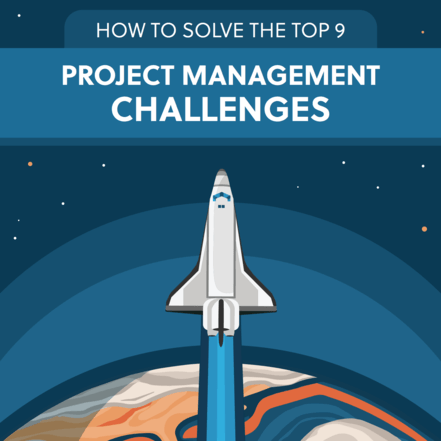“Expectations create and shape reality.” ― Debasish Mridha
Of the many elements that comprise a successful project, being able to effectively manage stakeholder expectations should be very high on your list of critical must-dos as a Project Manager. Those expectations can be many, varied and at times completely divergent. Keeping all of your stakeholders aligned and supportive of the project throughout its lifecycle takes the right mix of hard skills, soft skills, and tools.
Yet, here’s the rub: Just meeting your project objectives and delivering on time and/or on budget doesn’t always mean all expectations have been met. How you get there is often as important as where you get to. The “how” is where you build trust, respect and confidence. This is basically daily work life in action. And this is where the work of managing stakeholder expectations takes place.
Get it right and there are many benefits to be had, such as:
- Satisfied customers who’ll come back for more
- Engaged team members who’ll go the extra mile to support you
- Increased profits for your business
- Raising the value of your personal stock within your organization
- Feeling great about what you do
Get it wrong, and the above benefits don’t happen, and your job becomes a lot more challenging as stakeholder enthusiasm wanes and support for your project (or you) starts to evaporate.
So maybe you can’t keep everyone happy all the time but there are moves you can make to keep your key players on the same page—that page being the one you’re on, the one the project is on and the one the stakeholders are on together. That’s a big job! The tricky thing is keeping these key stakeholders in the loop along the way. For starters: Engage them early and update them often; address their questions and issues before they become your night terrors. Manage uncertainty and eliminate surprises.
The best way to keep stakeholders updated?
Automated scheduling is key to keeping stakeholders in the loop. Your stakeholders need easy and continuous visibility into the project schedule—whenever they need to check-in, and whenever you need them to. More precisely, keeping everyone in the loop requires a real-time schedule that automatically updates with every change, and shows project scope, progress against the original plan, forecast cost/revenue and the value of work that’s done. And this is where it gets tricky if you’re managing projects in spreadsheets or using legacy project management software that is static and inflexible.
How legacy tools fall short
With legacy tools project managers can invest huge amounts of time maintaining a schedule that is outdated as soon as it’s “published.” This is often due to the tools and processes (or lack thereof) used to maintain the schedule. The simple truth is, many tools and processes simply can’t keep up with the speed that organizations move, and the frequent shifts in priorities and the inevitable changes that crop up to impact the project. Typically, the main problem is the time it takes to collate the data, plug it into the schedule and push updates to the team, managers, and stakeholders.
Here’s an example of the horrible (but all too common) old-school process:
- Timesheets get submitted on a Friday.
- The PM goes through the various emails and spreadsheets received from other departments due to other pieces of work just cropping up.
- The PM spends a few days checking and correcting the entries and manually updates the schedule with the data.
- New work has been added so this has to be validated and then added—in other words, there’s a lot of re-working of dependencies.
- The updated forecast of start and finish dates for a myriad of tasks has to be manually tweaked to reflect changes (as not everything has gone according to plan).
- The PM then spends more time working out why the overall finish date is 12 months later than it was last week.
- And finally, a week or so later the PM emails his stakeholders with a copy of the schedule explaining that it “still needs some work.”
- [Sound of stakeholders grumbling]
The result? Stakeholders become seriously concerned because all they have is a week-old snapshot of what’s happened in the project and no clear picture of the forecast. Next, come the heated meetings or phone calls because the PM can’t give a definitive answer on whether the project is on plan or not (and being the PM means that whether or not it’s your fault, well, it’s your fault). And before those schedule issues are resolved, there’s the next batch of timesheet updates thrown into the mix which then have to be wrangled through the process—adding more pain to your existing pain.
The need for real-time schedules
Nothing is more frustrating to a stakeholder than being informed of an issue that is past the point of resolution when they could have headed it off if they’d known about it earlier. Stakeholders don’t like surprises. It kills their confidence, erodes your credibility and goes a long way to fuelling their disengagement from the project.
If any of the above sounds familiar and you’re ready for something new, then you need to look at another scheduling tool—one that’s automated and can be fed directly with data in terms of work that’s done and work that’s remaining. To keep stakeholders updated, you need to stay current too—and that takes automated scheduling to update in real-time, one that shows everyone the current state of play whenever they need project information.
The most effective way to manage stakeholder expectations is with a tool that automatically adjusts the start and the finish dates of project work throughout the life of the project—with every update and change—without the need for constant manual tweaking, or porting a ton of information from one silo to another.
If you’re spending more time trying to generate an accurate schedule while fending off update requests from your key players; if you’re reinterpreting and updating the plan more than actually managing the project, there’s a better way: automated scheduling. Your stakeholders demand and need the right data in a timely fashion; plus, you deserve a decent night’s sleep.
If you’d like to this article tapped a few buttons and you’d like to dig deeper into their solutions, download our eBook, How to Solve the Top 9 Project Management Challenges.








